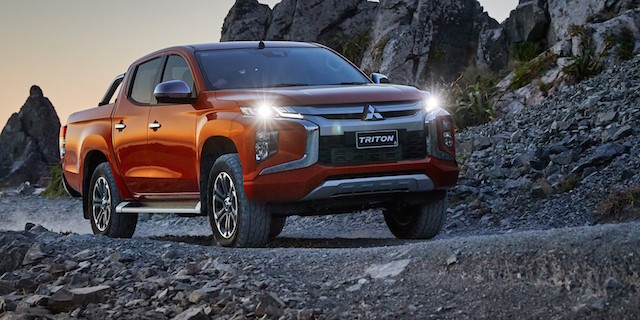
First it was an Isuzu executive, confirming three years ago last month that the new Mazda BT-50 would pretty much be a clone of the new Isuzu D-Max ute.
Mazda’s next BT-50 ute will be rebadged Isuzu D-Max
Now it’s the Renault-Nissan-Mitsubishi Alliance boss confirming that the new Nissan Navara will pretty much be a clone of the new Mitsubishi Triton.
But unlike the Isuzu-Mazda product, where there are likely to be notable interior and exterior styling differences, the next-generation Triton and Navara are expected to be starkly similar.
The cloning is the result of a widespread overhaul of the France/Japan Alliance announced by operating board chairman Jean-Dominique Senard. It’s been described as a ‘leader, follower’ strategy to cut costs and boost profits.
Senard has said he wants the Alliance “to be the most powerful combination of companies in the (automotive) world.”
“The leader, follower scheme is not about being leader against each other, it is about the Alliance competing with the automotive industry.”
As part of the restructuring, the three carmakers will move from currently sharing around 40 per cent of underpinnings to upwards of 80 per cent – eight out of 10 vehicles – by 2024. They will share body styling, with discreet changes to badging, grilles, bumpers, and wheel designs.
Mitsubishi will lead development of the next-generation Triton, in part because it is understood an Alliance study found the cost to develop, engineer and build the Triton and cheaper than for the Navara. The Triton is believed to be due around 2023, the Navara in 2025.
Before Senard’s announcement, the original plan was for the Navara to share the Triton’s platform and much of its tech but have its own distinct upper body design, in much the same way as the current Navara shares its underpinnings with the Mercedes-Benz X-Class.
But the only difference between the two under the new plan is likely to be confined to front end designs, badging and wheels.
Alliance partner Nissan has shut its factory in Barcelona, Spain, to save costs. Nissan also posted annual results, revealing a net loss of NZ$10.2 billion – its biggest in 20 years – on revenues down almost 15 per cent.
Looking ahead, the company forecast global sales by all carmakers in the coming year would drop between 15 and 20 per cent.
The Barcelona closure affects 3000 staff, along with two smaller factories nearby, and could mean production of some models will move to the Sunderland plant in the UK.
- Meantime, Toyota NZ is as usual saying nothing about the facelifted Hilux expected to land here later this year. But a website in the Middle East has published a picture (above) from a brochure it says was issued to Toyota dealers in the region. It shows styling changes to the Hilux front end, although it is not clear if this is an official picture. What is more widely believed is that the ute’s 2.8-litre turbo-diesel will get a modest power boost.


